All issues

Successor
Volume 14, Issue 3
Displaying 1-8 of 8 articles from this issue
- |<
- <
- 1
- >
- >|
-
[in Japanese]1928Volume 14Issue 3 Pages 209-228
Published: March 25, 1928
Released on J-STAGE: January 22, 2010
JOURNAL FREE ACCESSDownload PDF (5254K) -
H. KIKKAWA1928Volume 14Issue 3 Pages 228-243
Published: March 25, 1928
Released on J-STAGE: January 22, 2010
JOURNAL FREE ACCESSIn the proof tests of chain cables and crane chains in several leading countries, it isrequired that the chain should. stand a load which is nearly 72% of the breaking strength.
Wrought iron may, however, become brittle after it was strained by a stress beyond a certain limit and if this embrittling occur by the proof test, the chain will be used in a brittle condition after the test, which must, therefore, be revised.
Izod tests were made on test-pieces taken from three samples of wrought iron, which were strained to various degrees by a tensile testing machine to know the limit and the extent of embrittling by the strain.
The same tests were made on test pieces of a low carbon cast steel, as cast steel is often employed for chain cables recently.
The results of tests were as follows:-
(1) The Izod value of wrought iron is reduced after it was strained by a tensile stress over 60% of the breaking strength.
(2) The degree of embrittling is variable according to the material, some samples become only slightly brittle and the others lose. nearly 2/3 of thpir impact value after they were loaded about 72% of the breaking stress.
(3) In some cases the impact value of strained samples is greatly reduced at low temperatures while non-strained material remains the same.
(4) Low carbon cast steel becomes brittle by strain when stressed in the annealed state, but it does not when it was hardened and tempered.
It may thus be concluded that either the proof test for chains specifying excess load should be reasonably altered or the chains must be properly heat-treated so that the impact value will not be reduced by the strain of the proof testView full abstractDownload PDF (2717K) -
Tsunezo Kawasakiya1928Volume 14Issue 3 Pages 244-252
Published: March 25, 1928
Released on J-STAGE: January 22, 2010
JOURNAL FREE ACCESSThis paper deals with the theory of analytical expression of geometrical quantities of casting moulds or furnace walls, in which isothermal sufaces are assumed to be parallel. By introducing a new set of coordinates originated by the author, the distance, area and volume of an isothermal surface system are expressed in the most general forms, containing hyperbolic functions and two constants which the writer caHs "form factor" and "discriminating area". The writer defines a geometrical resistance as the definite integral of the reciprocal of area with respect to its distance, and also a geometrical contact resistance as the reciprocal of contact area. Subsequently two integral quantities are given, which are expressed in the most general forms and useful to express the thermal energy stored in an isothermal surface system. Simpler expressions are given for special cases. A universal chart is prepared for representing geometrical quantities and finally a numerical example is given to illustrate the applications of graphical and mathematical calculations.View full abstractDownload PDF (696K) -
1928Volume 14Issue 3 Pages 252a
Published: 1928
Released on J-STAGE: May 26, 2009
JOURNAL FREE ACCESSDownload PDF (48K) -
1928Volume 14Issue 3 Pages 252b
Published: 1928
Released on J-STAGE: May 26, 2009
JOURNAL FREE ACCESSDownload PDF (48K) -
1928Volume 14Issue 3 Pages 253-255
Published: March 25, 1928
Released on J-STAGE: May 26, 2009
JOURNAL FREE ACCESSDownload PDF (130K) -
1928Volume 14Issue 3 Pages 256-267
Published: March 25, 1928
Released on J-STAGE: May 26, 2009
JOURNAL FREE ACCESSDownload PDF (650K) -
1928Volume 14Issue 3 Pages e1
Published: 1928
Released on J-STAGE: May 26, 2009
JOURNAL FREE ACCESSDownload PDF (10K)
- |<
- <
- 1
- >
- >|